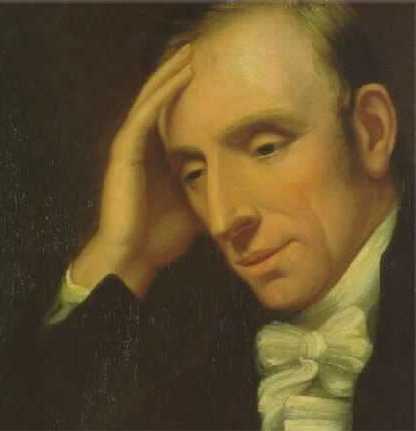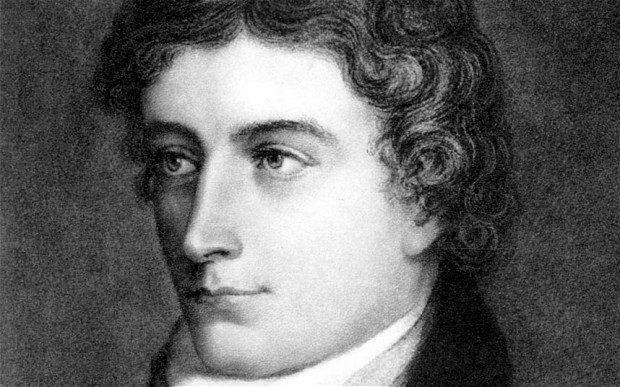Literature constantly evolves as new movements emerge to speak to the concerns of different groups of people and historical periods.
Absurd, literature of the (c. 1930–1970): A movement, primarily in the theater, that responded to the seeming illogicality and purposelessness of human life in works marked by a lack of clear narrative, understandable psychological motives, or emotional catharsis. Samuel Beckett’s Waiting for Godot is one of the most celebrated works in the theater of the absurd.
Aestheticism (c. 1835–1910): A late-19th-century movement that believed in art as an end in itself. Aesthetes such as Oscar Wilde and Walter Pater rejected the view that art had to posses a higher moral or political value and believed instead in “art for art’s sake.”
Angry Young Men (1950s–1980s): A group of male British writers who created visceral plays and fiction at odds with the political establishment and a self-satisfied middle class. John Osborne’s playLook Back in Anger (1957) is one of the seminal works of this movement.
Beat Generation (1950s–1960s): A group of American writers in the 1950s and 1960s who sought release and illumination though a bohemian counterculture of sex, drugs, and Zen Buddhism. Beat writers such as Jack Kerouac (On The Road) and Allen Ginsberg (Howl) gained fame by giving readings in coffeehouses, often accompanied by jazz music.
Bloomsbury Group (c. 1906–1930s): An informal group of friends and lovers, including Clive Bell, E. M. Forster, Roger Fry, Lytton Strachey, Virginia Woolf, and John Maynard Keynes, who lived in the Bloomsbury section of London in the early 20th century and who had a considerable liberalizing influence on British culture.
Commedia dell’arte (1500s–1700s): Improvisational comedy first developed in Renaissance Italy that involved stock characters and centered around a set scenario. The elements of farce and buffoonery in commedia dell’arte, as well as its standard characters and plot intrigues, have had a tremendous influence on Western comedy, and can still be seen in contemporary drama and television sitcoms.
Dadaism (1916–1922): An avant-garde movement that began in response to the devastation of World War I. Based in Paris and led by the poet Tristan Tzara, the Dadaists produced nihilistic and antilogical prose, poetry, and art, and rejected the traditions, rules, and ideals of prewar Europe.
Enlightenment (c. 1660–1790): An intellectual movement in France and other parts of Europe that emphasized the importance of reason, progress, and liberty. The Enlightenment, sometimes called the Age of Reason, is primarily associated with nonfiction writing, such as essays and philosophical treatises. Major Enlightenment writers include Thomas Hobbes, John Locke, Jean-Jacques Rousseau, René Descartes.
Elizabethan era (c. 1558–1603): A flourishing period in English literature, particularly drama, that coincided with the reign of Queen Elizabeth I and included writers such as Francis Bacon, Ben Jonson, Christopher Marlowe, William Shakespeare, Sir Philip Sidney, and Edmund Spenser.
Gothic fiction (c. 1764–1820): A genre of late-18th-century literature that featured brooding, mysterious settings and plots and set the stage for what we now call “horror stories.” Horace Walpole’s Castle of Otranto, set inside a medieval castle, was the first major Gothic novel. Later, the term “Gothic” grew to include any work that attempted to create an atmosphere of terror or the unknown, such as Edgar Allan Poe’s short stories.
Harlem Renaissance (c. 1918–1930): A flowering of African-American literature, art, and music during the 1920s in New York City. W. E. B. DuBois’s The Souls of Black Folk anticipated the movement, which included Alain Locke’s anthology The New Negro, Zora Neale Hurston’s novel Their Eyes Were Watching God, and the poetry of Langston Hughes and Countee Cullen.
Lost Generation (c. 1918–1930s): A term used to describe the generation of writers, many of them soldiers that came to maturity during World War I. Notable members of this group include F. Scott Fitzgerald, John Dos Passos, and Ernest Hemingway, whose novel The Sun Also Rises embodies the Lost Generation’s sense of disillusionment.
Magic realism (c. 1935–present): A style of writing, popularized by Jorge Luis Borges, Gabriel García Márquez, Günter Grass, and others, that combines realism with moments of dream-like fantasy within a single prose narrative.
Metaphysical poets (c. 1633–1680): A group of 17th-century poets who combined direct language with ingenious images, paradoxes, and conceits. John Donne and Andrew Marvell are the best known poets of this school.
Middle English (c. 1066–1500): The transitional period between Anglo-Saxon and modern English. The cultural upheaval that followed the Norman Conquest of England, in 1066, saw a flowering of secular literature, including ballads, chivalric romances, allegorical poems, and a variety of religious plays. Chaucer’s The Canterbury Tales is the most celebrated work of this period.
Modernism (1890s–1940s): A literary and artistic movement that provided a radical breaks with traditional modes of Western art, thought, religion, social conventions, and morality. Major themes of this period include the attack on notions of hierarchy; experimentation in new forms of narrative, such as stream of consciousness; doubt about the existence of knowable, objective reality; attention to alternative viewpoints and modes of thinking; and self-referentiality as a means of drawing attention to the relationships between artist and audience, and form and content.
- High modernism (1920s): Generally considered the golden age of modernist literature, this period saw the publication of James Joyce’sUlysses, T. S. Eliot’s The Waste Land, Virginia Woolf’s Mrs. Dalloway,and Marcel Proust’s In Search of Lost Time.
Naturalism (c. 1865–1900): A literary movement that used detailed realism to suggest that social conditions, heredity, and environment had inescapable force in shaping human character. Leading writers in the movement include Émile Zola, Theodore Dreiser, and Stephen Crane.
Neoclassicism (c. 1660–1798): A literary movement, inspired by the rediscovery of classical works of ancient Greece and Rome that emphasized balance, restraint, and order. Neoclassicism roughly coincided with the Enlightenment, which espoused reason over passion. Notable neoclassical writers include Edmund Burke, John Dryden, Samuel Johnson, Alexander Pope, and Jonathan Swift.
Nouveau Roman (“New Novel”) (c. 1955–1970): A French movement, led by Alain Robbe-Grillet, that dispensed with traditional elements of the novel, such as plot and character, in favor of neutrally recording the experience of sensations and things.
Postcolonial literature (c. 1950s–present): Literature by and about people from former European colonies, primarily in Africa, Asia, South America, and the Caribbean. This literature aims both to expand the traditional canon of Western literature and to challenge Eurocentric assumptions about literature, especially through examination of questions of otherness, identity, and race. Prominent postcolonial works include Chinua Achebe’s Things Fall Apart, V. S. Naipaul’s A House for Mr. Biswas, and Salman Rushdie’s Midnight’s Children.Edward Said’s Orientalism (1978) provided an important theoretical basis for understanding postcolonial literature.
Postmodernism (c. 1945–present): A notoriously ambiguous term, especially as it refers to literature, postmodernism can be seen as a response to the elitism of high modernism as well as to the horrors of World War II. Postmodern literature is characterized by a disjointed, fragmented pastiche of high and low culture that reflects the absence of tradition and structure in a world driven by technology and consumerism. Julian Barnes, Don DeLillo, Toni Morrison, Vladimir Nabokov, Thomas Pynchon, Salman Rushdie, and Kurt Vonnegut are among many who are considered postmodern authors.
Pre-Raphaelites (c. 1848–1870): The literary arm of an artistic movement that drew inspiration from Italian artists working before Raphael (1483–1520). The Pre-Raphaelites combined sensuousness and religiosity through archaic poetic forms and medieval settings. William Morris, Christina Rossetti, Dante Gabriel Rossetti, and Charles Swinburne were leading poets in the movement.
Realism (c. 1830–1900): A loose term that can refer to any work that aims at honest portrayal over sensationalism, exaggeration, or melodrama. Technically, realism refers to a late-19th-century literary movement—primarily French, English, and American—that aimed at accurate detailed portrayal of ordinary, contemporary life. Many of the 19th century’s greatest novelists, such as Honoré de Balzac, Charles Dickens, George Eliot, Gustave Flaubert, and Leo Tolstoy, are classified as realists. Naturalism ( see above ) can be seen as an intensification of realism.
Romanticism (c. 1798–1832): A literary and artistic movement that reacted against the restraint and universalism of the Enlightenment. The Romantics celebrated spontaneity, imagination, subjectivity, and the purity of nature. Notable English Romantic writers include Jane Austen, William Blake, Lord Byron, Samuel Taylor Coleridge, John Keats, Percy Bysshe Shelley, and William Wordsworth. Prominent figures in the American Romantic movement include Nathaniel Hawthorne, Herman Melville, Edgar Allan Poe, William Cullen Bryant, and John Greenleaf Whittier.
Sturm und Drang (1770s): German for “storm and stress,” this brief German literary movement advocated passionate individuality in the face of Neoclassical rationalism and restraint. Goethe’s The Sorrows of Young Werther is the most enduring work of this movement, which greatly influenced the Romantic movement (see above).
Surrealism (1920s–1930s): An avant-garde movement, based primarily in France, that sought to break down the boundaries between rational and irrational, conscious and unconscious, through a variety of literary and artistic experiments. The surrealist poets, such as André Breton and Paul Eluard, were not as successful as their artist counterparts, who included Salvador Dalí, Joan Miró, and René Magritte.
Symbolists (1870s–1890s): A group of French poets who reacted against realism with a poetry of suggestion based on private symbols, and experimented with new poetic forms such as free verse and theprose poem. The symbolists—Stéphane Mallarmé, Arthur Rimbaud, and Paul Verlaine are the most well known—were influenced by Charles Baudelaire. In turn, they had a seminal influence on the modernist poetry of the early 20th century.
Transcendentalism (c. 1835–1860): An American philosophical and spiritual movement, based in New England, that focused on the primacy of the individual conscience and rejected materialism in favor of closer communion with nature. Ralph Waldo Emerson’s “Self-Reliance” and Henry David Thoreau’s Walden are famous transcendentalist works.
Victorian era (c. 1832–1901): The period of English history between the passage of the first Reform Bill (1832) and the death of Queen Victoria (reigned 1837–1901). Though remembered for strict social, political, and sexual conservatism and frequent clashes between religion and science, the period also saw prolific literary activity and significant social reform and criticism. Notable Victorian novelists include the Brontë sisters, Charles Dickens, George Eliot, William Makepeace Thackeray, Anthony Trollope, and Thomas Hardy, while prominent poets include Matthew Arnold; Robert Browning; Elizabeth Barrett Browning; Gerard Manley Hopkins; Alfred, Lord Tennyson; and Christina Rossetti. Notable Victorian nonfiction writers include Walter Pater, John Ruskin, and Charles Darwin, who penned the famous On the Origin of Species (1859).
Credits: Sparknotes




















